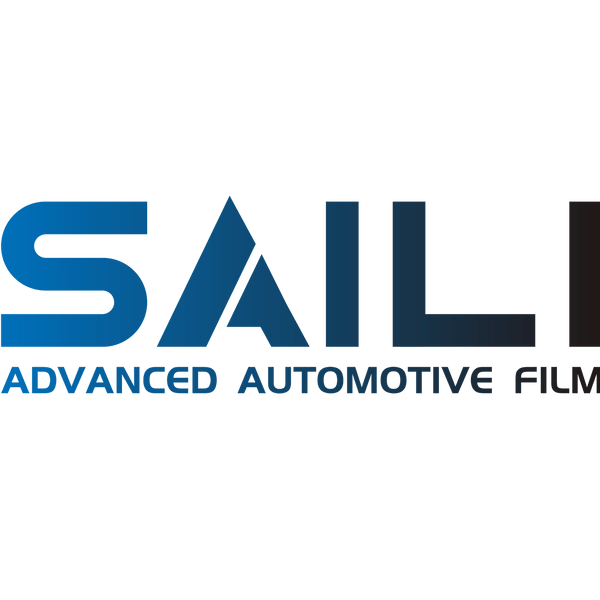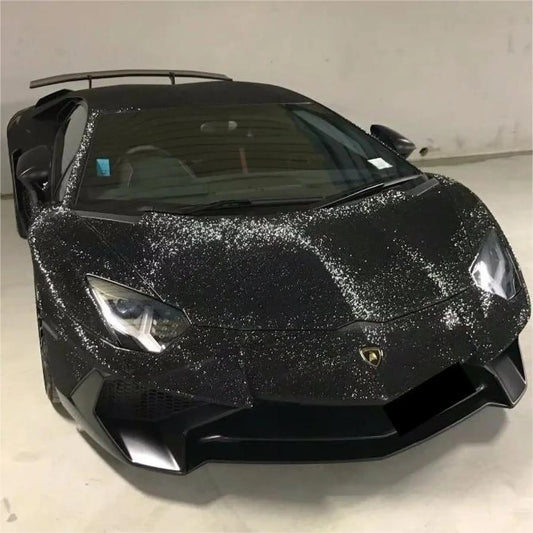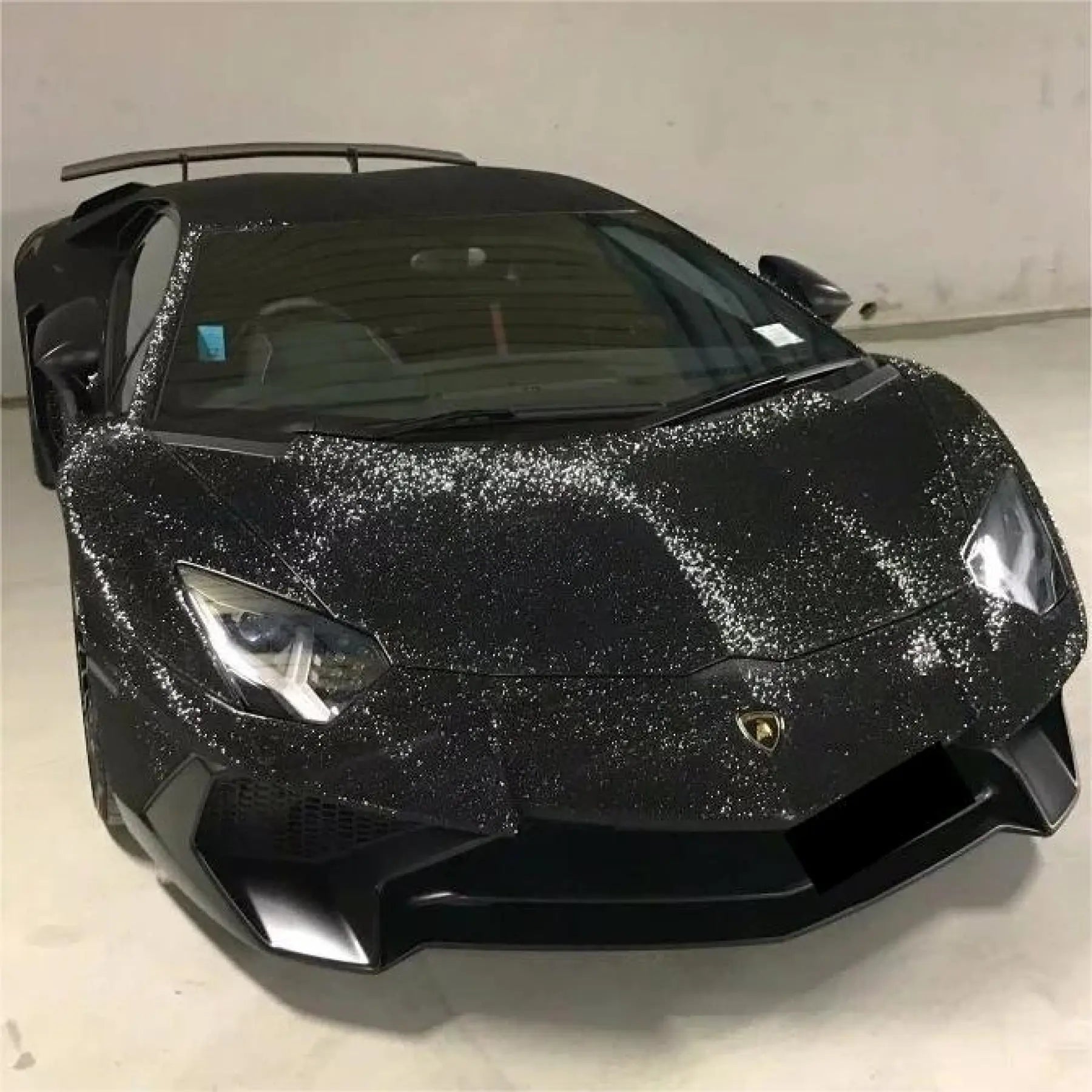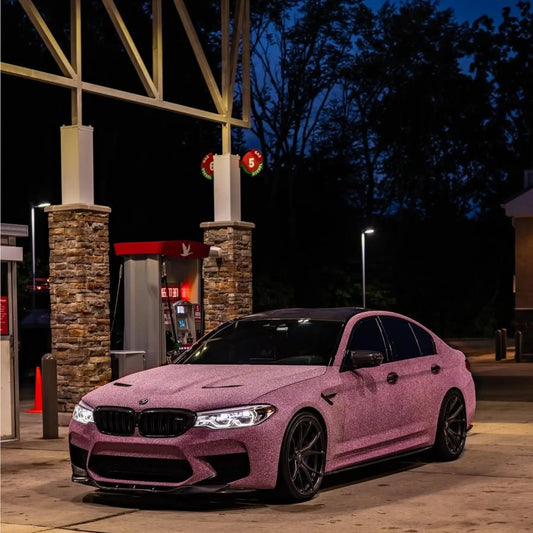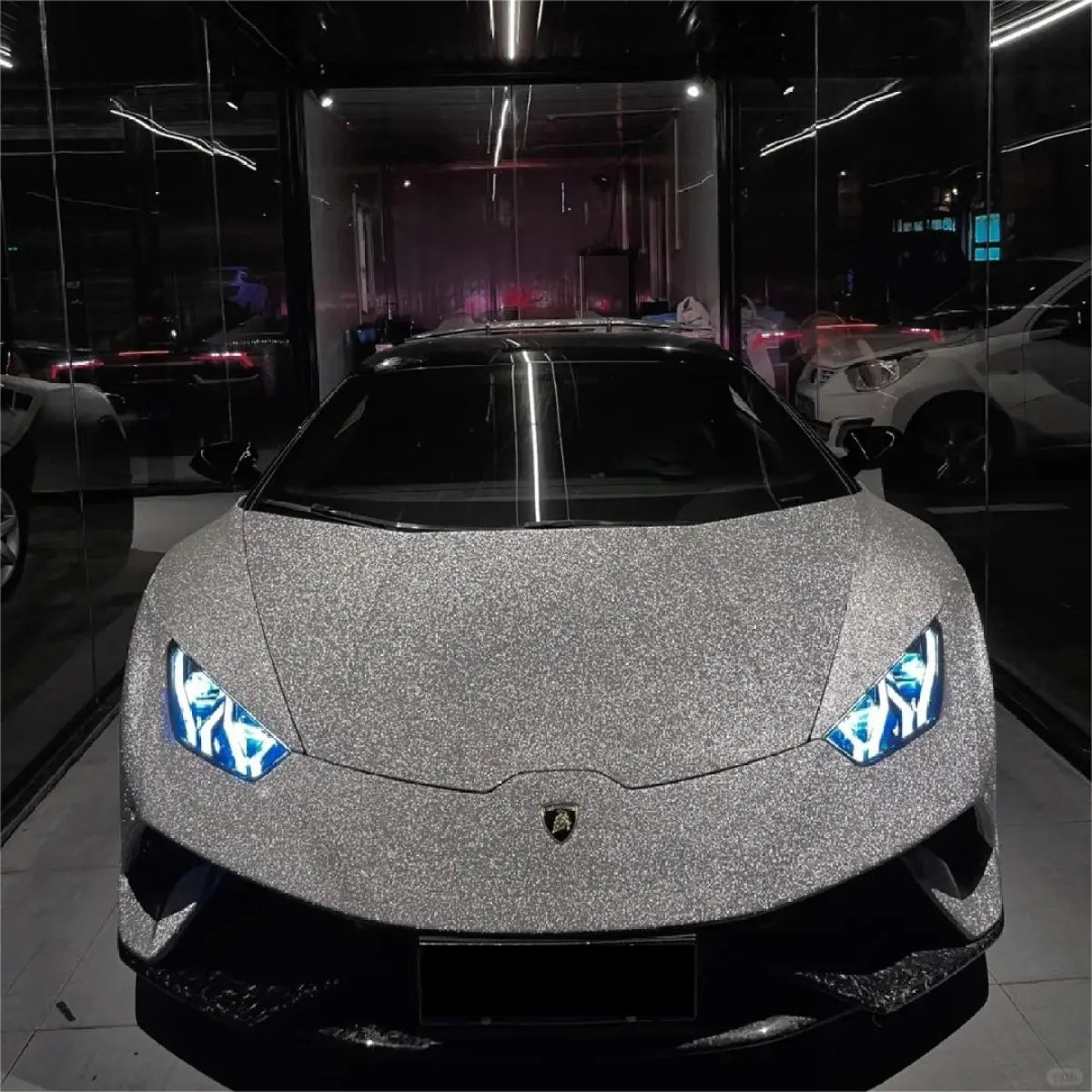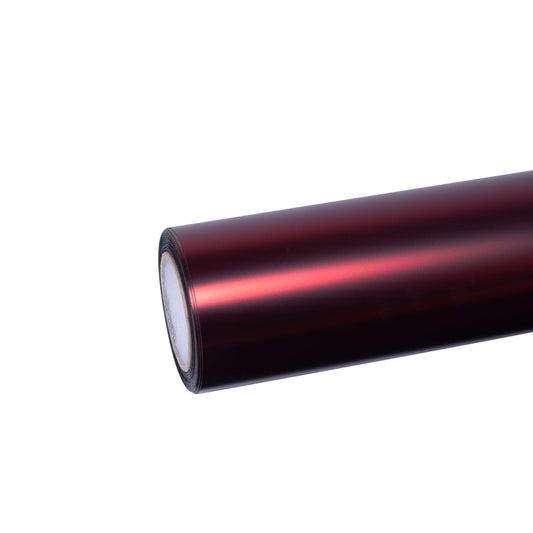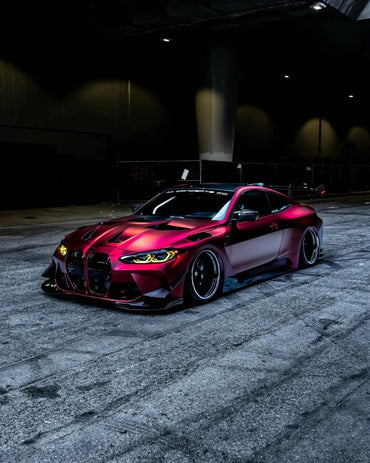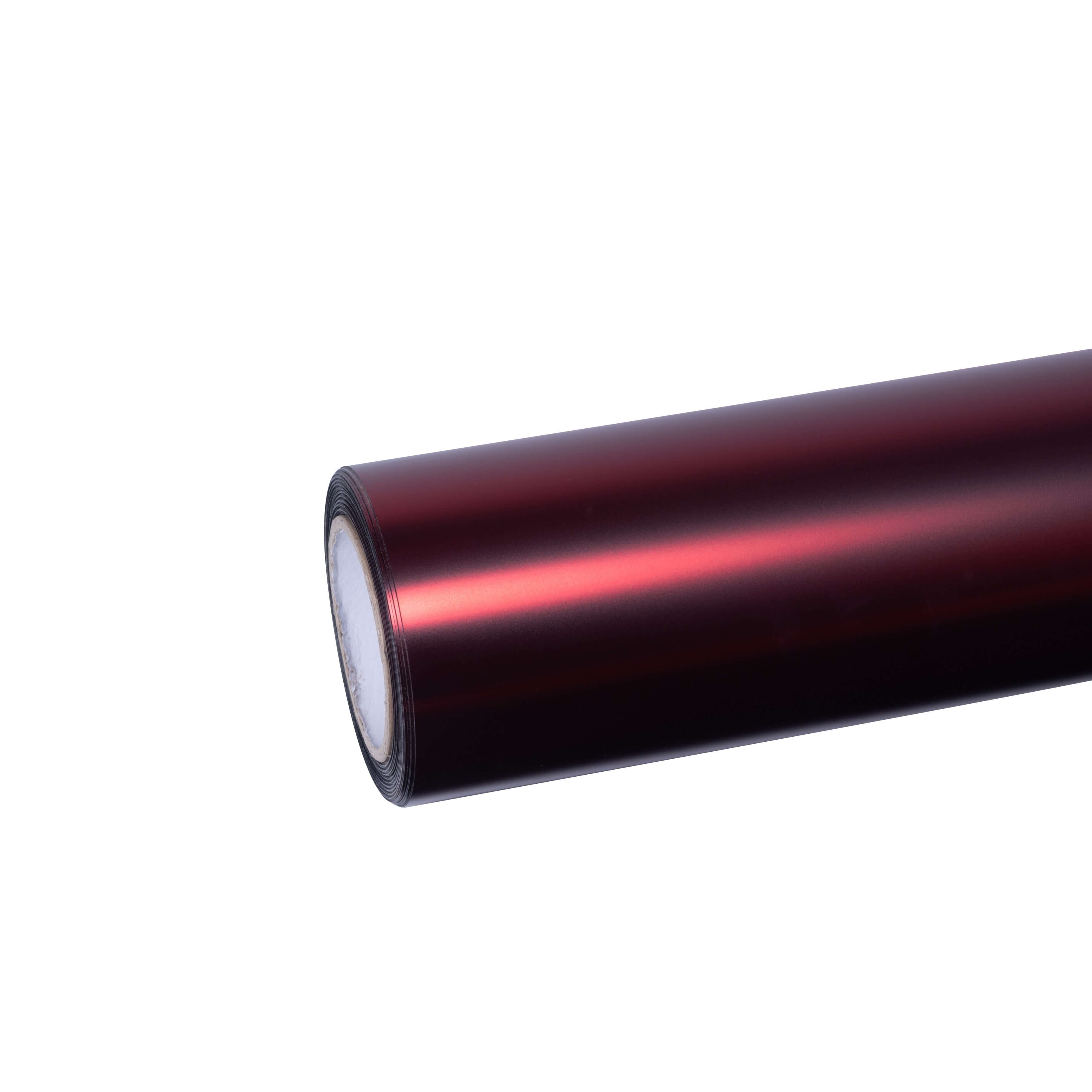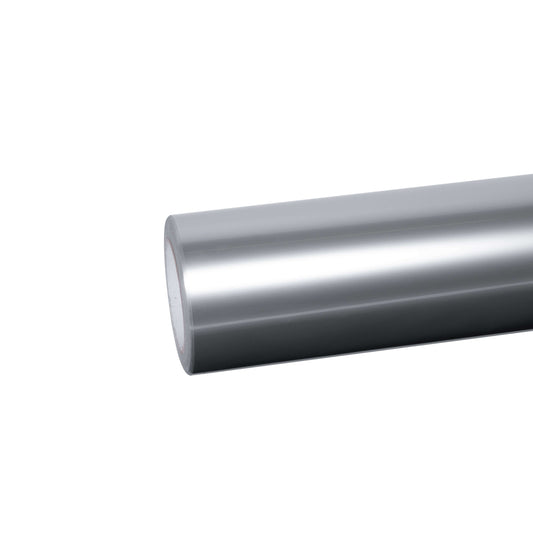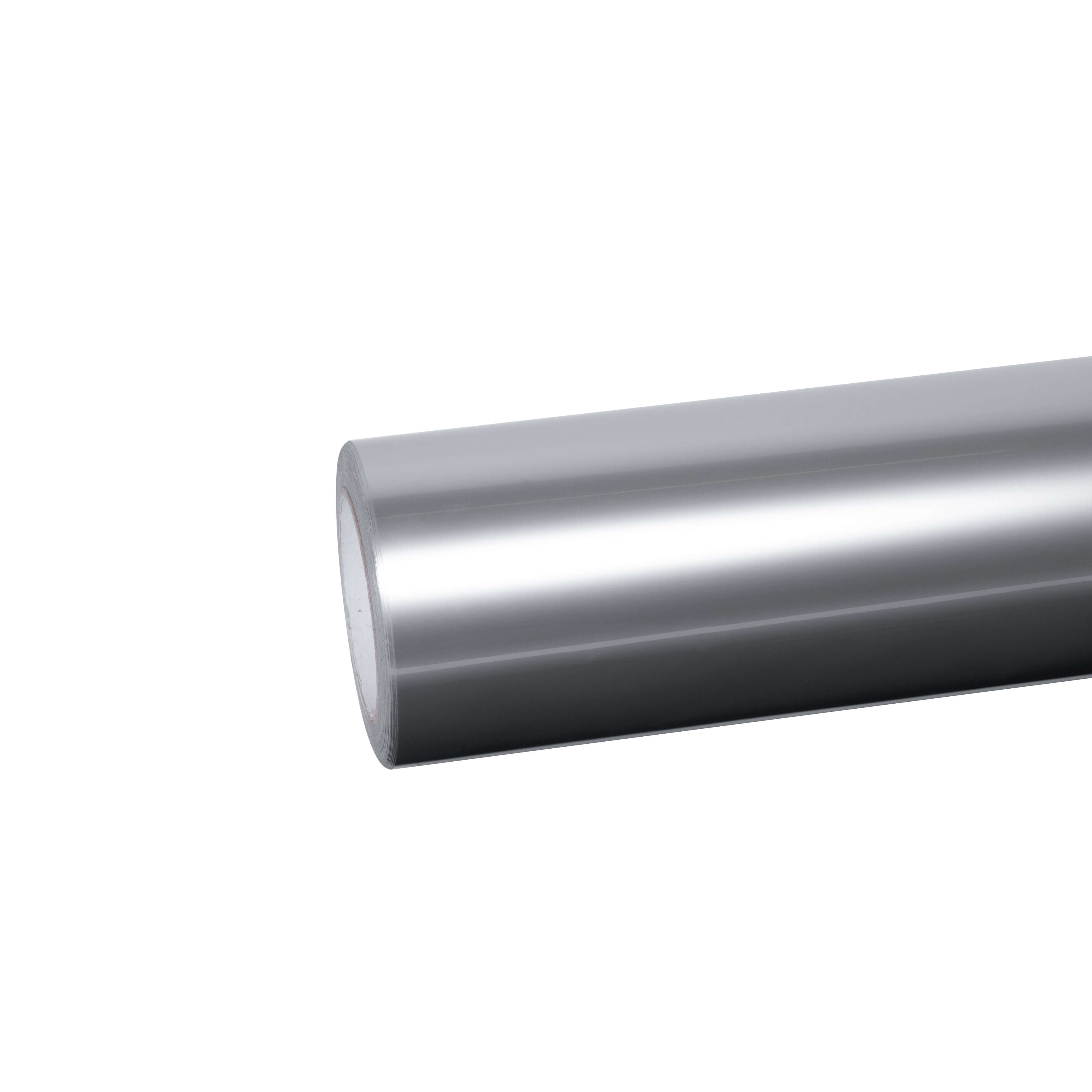What is Vinyl Wrap? Style Meets Affordability
Vinyl wrap is a thin, flexible film made from polyvinyl chloride (PVC) that's applied to your vehicle's exterior surface. Measuring approximately 3-4 mils in thickness, vinyl wraps are primarily designed for aesthetic transformation, allowing you to completely change your vehicle's color and finish without the permanence or expense of a new paint job.
Key Characteristics of Vinyl Wrap:
Material Composition: Made from PVC with a pressure-sensitive adhesive backing, vinyl wraps are engineered for flexibility and conformability to vehicle curves and contours.
Aesthetic Versatility: The customization possibilities with vinyl wrap are virtually limitless. From metallic finishes to crystal effects, 3D carbon fiber textures to liquid chrome, vinyl wraps offer unparalleled design freedom.
Protection Level: While vinyl wraps provide moderate protection against UV rays, minor scratches, and surface abrasions, they're not specifically engineered for impact resistance. The thinner construction means they offer a protective barrier but won't withstand rock chips or significant debris impacts as effectively as PPF.
Popular Vinyl Wrap Applications:
- Complete color changes for vehicle personalization
- Dual-color dream wraps for distinctive styling
- Glitter and sparkle finishes for show cars
- Ultra-matte wraps for modern, sophisticated looks
- Commercial vehicle branding and advertising
- Temporary styling for leased vehicles
According to Kelley Blue Book, professional vinyl wrap installation typically costs between $2,000 and $6,000 for a full vehicle, depending on size, complexity, and finish type. This makes vinyl wrapping significantly more affordable than both custom paint jobs and full PPF coverage.
What is Paint Protection Film (PPF)? Ultimate Defense Technology
Paint protection film represents the premium solution for vehicle protection. Made from thermoplastic polyurethane (TPU), PPF is specifically engineered to absorb impacts, resist abrasions, and shield your vehicle's paint from environmental damage. At 6-10 mils thick, PPF is approximately twice the thickness of vinyl wrap, providing substantially greater protection.
Advanced TPU Technology:
Modern TPU paint protection film utilizes sophisticated polymer chemistry to deliver exceptional performance characteristics that vinyl simply cannot match. The thermoplastic polyurethane material combines the elasticity of rubber with the toughness of hard plastics, creating a film that's both flexible and incredibly durable.
Self-Healing Properties:
One of the most remarkable features of quality TPU PPF is its self-healing capability. The elastomeric properties of the polyurethane allow the film to repair minor scratches, swirl marks, and scuffs automatically when exposed to heat from sunlight or warm water. This self-healing technology maintains the film's pristine appearance throughout its lifespan, reducing maintenance requirements and preserving your vehicle's showroom finish.
Protection Capabilities:
PPF excels at defending against:
- Rock chips and road debris impacts
- Scratches from car washes and environmental contact
- Chemical etching from bird droppings, tree sap, and insect acids
- UV radiation and paint oxidation
- Staining from environmental contaminants
- Minor abrasions and surface damage
Colored PPF: The Best of Both Worlds
The automotive industry has witnessed a significant shift with the emergence of colored paint protection film. This innovative product combines PPF's superior protective qualities with the aesthetic customization of vinyl wraps. Colored PPF offers style transformation while maintaining the durability, self-healing properties, and impact resistance that traditional clear PPF provides.
Search interest for colored PPF has doubled since 2023, with luxury vehicle owners leading the adoption trend. This technology allows you to change your vehicle's appearance while ensuring maximum paint protection, making it increasingly popular among enthusiasts who refuse to compromise between style and substance.
Head-to-Head Comparison: Vinyl Wrap vs Paint Protection Film
Thickness and Durability
Vinyl Wrap: 3-4 mils thick, vinyl provides a protective layer but has limitations. The thinner construction makes it more susceptible to damage from sharp objects, and it cannot prevent paint damage from significant impacts.
Paint Protection Film: 6-10 mils thick, PPF offers robust protection against impacts and abrasions. The greater thickness absorbs energy from debris strikes, preventing damage from reaching the underlying paint surface.
Material Composition
Vinyl Wrap: Made from polyvinyl chloride, vinyl is more rigid and brittle compared to PPF. It cannot self-repair damage and is more prone to lifting at edges over time, particularly in harsh weather conditions.
Paint Protection Film: Constructed from thermoplastic polyurethane, PPF features superior flexibility and molecular memory. The material's elastomeric nature allows it to stretch, conform to complex curves, and maintain adhesion even in extreme temperatures.
Self-Healing Technology
Vinyl Wrap: Does not possess self-healing properties. Any scratches, scuffs, or swirl marks remain permanent until the wrap is replaced.
Paint Protection Film: Features advanced self-healing technology. Minor surface damage disappears with heat exposure, maintaining the film's flawless appearance throughout its service life. This property significantly extends the aesthetic lifespan of the protective layer.
Lifespan and Longevity
Vinyl Wrap: Typically lasts 3-5 years with proper maintenance. Factors like UV exposure, climate conditions, and care quality affect longevity. Color fading and edge lifting are common after several years.
Paint Protection Film: Can last 5-10 years or more, depending on quality and environmental conditions. Premium TPU films resist yellowing and degradation far better than vinyl. The superior durability makes PPF more cost-effective over the long term despite higher initial investment.
UV Resistance and Yellowing
Vinyl Wrap: Provides moderate UV protection but can fade over time, particularly in bright, sunny climates. Lower-quality vinyl may experience color shift or loss of gloss after extended sun exposure.
Paint Protection Film: Advanced TPU formulations with aliphatic polyurethane offer exceptional UV resistance. Quality PPF maintains optical clarity without yellowing, even after years of sun exposure. This characteristic is particularly important for clear PPF applications where clarity preservation is essential.
Installation Complexity
Vinyl Wrap: Installation requires skill but is generally less demanding than PPF. The material is more forgiving during application, and repositioning is easier. Many experienced enthusiasts successfully install vinyl wraps themselves.
Paint Protection Film: Requires professional installation for optimal results. PPF installation demands specialized tools, techniques, and expertise. Proper surface preparation, precise cutting, and bubble-free application are critical for achieving a seamless finish. The adhesive must be activated correctly to ensure proper bonding and longevity.
Removal Process
Vinyl Wrap: Generally easier to remove when done correctly. However, improper installation or extended wear can result in adhesive residue or paint damage during removal. Professional removal is recommended after 4-5 years to prevent complications.
Paint Protection Film: Designed for clean removal without paint damage when removed properly. Professional removal is essential, particularly for aged film. Well-maintained PPF can be removed after 10 years without leaving residue or affecting the underlying paint.
Cost Analysis: Investment vs Value
Initial Investment
Vinyl Wrap Pricing:
- Compact cars: $2,000 - $3,500
- Mid-size sedans: $3,000 - $4,500
- SUVs and trucks: $3,500 - $6,000
- Specialty finishes: Add 20-50% premium
At Sailifilm, our car vinyl wrap collections offer competitive pricing with rolls starting at $69, making professional-grade materials accessible for both DIY enthusiasts and professional installers.
Paint Protection Film Pricing:
- Partial coverage (front end): $1,500 - $2,500
- Half vehicle coverage: $2,500 - $4,000
- Full vehicle coverage: $4,000 - $8,000
- Colored PPF full coverage: $5,000 - $10,000+
Sailifilm's colored paint protection film is priced at $499 per roll, delivering premium TPU protection at competitive rates.
Long-Term Value Proposition
When evaluating cost-effectiveness, consider the lifespan-to-price ratio:
Vinyl Wrap: $2,000-$6,000 ÷ 3-5 years = $400-$2,000 per year
Paint Protection Film: $4,000-$8,000 ÷ 5-10 years = $400-$1,600 per year
PPF often delivers comparable or superior value when factoring in longevity, superior protection, and reduced maintenance requirements. Additionally, PPF's paint preservation benefits contribute to higher resale values, further improving the investment return.
Which Solution is Right for Your Vehicle?
Choose Vinyl Wrap If:
✓ Your primary goal is aesthetic transformation and customization ✓ You want the flexibility to change your vehicle's appearance every few years ✓ Budget is a primary concern for initial investment ✓ Your vehicle isn't exposed to harsh driving conditions regularly ✓ You're wrapping a leased vehicle and need easy reversibility ✓ You desire unique finishes like liquid chrome or glitter effects
Choose Paint Protection Film If:
✓ Maximum paint protection is your priority ✓ Your vehicle is exposed to harsh road conditions, debris, or frequent highway driving ✓ You want self-healing technology for maintenance-free protection ✓ Long-term value and paint preservation are important ✓ You're protecting a high-value, luxury, or collector vehicle ✓ You want to maintain original paint while adding protection ✓ You desire both protection and color change with colored PPF
The Hybrid Approach:
Many vehicle owners are discovering the benefits of combining both technologies. A popular strategy involves:
- Applying PPF to high-impact areas (front bumper, hood, fenders, mirrors, rocker panels)
- Using vinyl wrap on remaining surfaces for aesthetic customization
- Achieving comprehensive protection on vulnerable areas while keeping costs manageable
This approach delivers optimal protection where needed most while allowing creative styling freedom on less vulnerable panels.
Professional Installation vs DIY: What You Need to Know
DIY Vinyl Wrap Installation
Vinyl wrapping can be a rewarding DIY project for those with patience, proper tools, and technique. Sailifilm provides comprehensive wrapping tools and sample kits to help you get started.
Essential Tools Required:
- Heat gun for conforming and post-heating
- Squeegees for bubble removal
- Precision cutting tools
- Cleaning and preparation supplies
- Proper workspace with controlled temperature
DIY Success Factors:
- Start with smaller panels to build skill
- Maintain consistent temperature (60-80°F ideal)
- Work slowly and methodically
- Don't over-stretch the material
- Use proper surface preparation techniques
Professional PPF Installation
PPF installation should be left to trained professionals due to the precision and expertise required. Professional installers use:
- Computer-cut patterns for precise coverage
- Specialized slip solutions for positioning
- Professional-grade squeegees and tools
- Proper curing and post-installation care protocols
The investment in professional installation ensures optimal adhesion, appearance, and longevity of your paint protection film.
Maintenance and Care Guidelines
Vinyl Wrap Maintenance
Cleaning:
- Hand wash only (avoid automated car washes with brushes)
- Use pH-neutral automotive soap
- Soft microfiber towels for drying
- Avoid pressure washers directly on seams or edges
Protection:
- Apply vinyl-specific sealants quarterly
- Park in covered areas when possible
- Address edge lifting immediately
- Avoid exposure to harsh chemicals
Longevity Tips:
- Regular cleaning prevents contamination buildup
- Inspect seams and edges monthly
- Professional maintenance every 6-12 months
- Consider protective coatings for high-traffic areas
Paint Protection Film Care
Cleaning:
- Hand wash with pH-neutral soap
- Use soft wash mitts or microfiber towels
- Rinse thoroughly to remove all soap residue
- Pat dry to prevent water spotting
Self-Healing Activation:
- Park in sunlight to activate self-healing properties
- Use warm water (not boiling) on minor scratches
- Heat gun on low setting for stubborn marks (professional use)
Longevity Enhancement:
- Ceramic coating application adds hydrophobic properties
- Regular maintenance every 3-6 months
- Professional inspection annually
- Address any lifting or issues promptly
Environmental Considerations and Sustainability
Vinyl Wrap Environmental Impact
PVC production has environmental implications, though modern manufacturing has improved sustainability. Consider:
- PVC is recyclable but infrastructure is limited
- Proper disposal is important to minimize environmental impact
- Quality vinyl has longer lifespan, reducing replacement frequency
- Some manufacturers now offer eco-friendly vinyl options
PPF Environmental Advantages
TPU is considered more environmentally friendly than PVC:
- TPU production has lower environmental impact
- Material is more biodegradable than PVC
- Longer lifespan means less frequent replacement
- Reduces need for paint repairs and refinishing
- Protects original paint, eliminating repainting waste
According to Wikipedia's article on thermoplastic polyurethane, TPU materials offer superior sustainability profiles compared to traditional plastics while maintaining exceptional performance characteristics.
Industry Trends and Future Outlook
The automotive protection market is evolving rapidly in 2025, driven by several key trends:
Rising Demand for Colored PPF
Market research indicates that colored PPF demand has doubled since 2023, with luxury vehicle owners, Tesla drivers, and Porsche enthusiasts leading adoption. The ability to combine protection with customization without compromising on either has made colored PPF increasingly attractive.
Technology Advancements
- Improved self-healing formulations healing deeper scratches
- Enhanced UV resistance extending film lifespan
- Better hydrophobic coatings improving self-cleaning properties
- Advanced adhesives allowing easier installation and removal
- Thinner films maintaining protection with improved conformability
Market Growth Projections
Industry analysts project continued strong growth in both segments:
- Premium TPU PPF market expected to grow 6.4% annually through 2027
- Vinyl wrap market expanding with new finish innovations
- Increasing awareness of paint protection value driving adoption
- Rising vehicle values making protection investments more attractive
Making Your Decision: Key Takeaways
When choosing between vinyl wrap and paint protection film, remember these essential points:
Budget Considerations: Vinyl wrap offers lower initial cost, while PPF provides better long-term value through extended lifespan and superior protection.
Protection Level: If defending against rock chips, road debris, and environmental damage is paramount, PPF's superior thickness and impact resistance make it the clear choice.
Aesthetic Goals: For maximum customization flexibility and bold styling, vinyl wrap delivers unmatched variety. For protection plus color change, colored PPF offers the best compromise.
Vehicle Value: Higher-value vehicles justify PPF investment through paint preservation and resale value maintenance. Lower-value or temporary vehicles may be better suited for vinyl wrap.
Usage Patterns: Vehicles facing harsh driving conditions, frequent highway travel, or severe weather benefit most from PPF's robust protection. City-driven vehicles in milder climates can perform well with quality vinyl wrap.
Long-term Plans: If you plan to keep your vehicle 5+ years, PPF's longevity provides excellent value. For shorter ownership periods or frequent style changes, vinyl wrap offers ideal flexibility.
Sailifilm: Your Trusted Partner in Vehicle Protection
At Sailifilm, we understand that choosing the right vehicle protection solution is an important investment decision. That's why we offer both premium vinyl wrap collections and professional-grade TPU paint protection film to meet diverse needs and preferences.
Our Product Range:
Vinyl Wrap Collections:
- Rainbow Laser Series - Eye-catching chameleon effects
- Metallic Wraps - Classic shine with modern durability
- Crystal Vinyl - Sparkling, dimensional finishes
- Ultra-Matte Wraps - Sophisticated, contemporary styling
- 3D Carbon Fiber - Authentic texture and depth
- Liquid Chrome - Mirror-like reflective finishes
- Dual-Color Dream Series - Unique two-tone effects
Paint Protection Film:
- Colored PPF - Style meets protection
- TPU Paint Protection - Premium clear protection
- Self-healing technology standard across all PPF products
- 10-year warranty on select TPU films
Why Choose Sailifilm:
✓ Quality Materials: We use only premium-grade TPU and PVC materials from trusted manufacturers ✓ Competitive Pricing: Professional-quality protection at accessible prices ✓ Expert Support: Comprehensive installation guidance and customer service ✓ Wide Selection: Extensive color and finish options for both vinyl and PPF ✓ Best Sellers: Check our most popular products trusted by professionals and enthusiasts ✓ Sample Kits Available: Try before you buy with our sample kits
Frequently Asked Questions
Can I apply PPF over vinyl wrap? No, PPF should be applied directly to paint. Applying PPF over vinyl creates adhesion issues and negates the protective benefits of both products.
Will vinyl wrap or PPF damage my original paint? When properly installed and removed by professionals, neither product should damage factory paint. Ensure your paint is in good condition before application.
Can I wax or polish over vinyl wrap or PPF? Use products specifically designed for wrapped vehicles or PPF. Traditional car waxes can damage or dull vinyl and PPF. Ceramic coatings designed for film applications provide excellent protection.
How long does installation take? Professional vinyl wrap installation takes 2-5 days depending on vehicle complexity. PPF installation ranges from 1 day for partial coverage to 3-5 days for full vehicle coverage.
Is it cheaper to vinyl wrap or paint a car? Vinyl wrapping costs significantly less than quality paint jobs. Professional paint costs $5,000-$20,000+, while full vinyl wraps range $2,000-$6,000.
Can vinyl wrap or PPF be repaired if damaged? PPF's self-healing properties repair minor scratches automatically. For significant damage to either product, affected panels can be replaced individually without redoing the entire vehicle.
Conclusion: Protecting Your Investment
Whether you choose vinyl wrap for its aesthetic versatility or paint protection film for its superior defensive capabilities, investing in vehicle protection is a smart decision that preserves your car's appearance and value. Both technologies offer distinct advantages, and understanding their differences empowers you to make the right choice for your specific situation.
At Sailifilm, we're committed to providing premium protection solutions at competitive prices, backed by expert support and quality guarantees. Browse our complete collection of vehicle wraps and paint protection films to find the perfect solution for your vehicle.
Ready to protect and transform your vehicle? Explore our best-selling products or order sample kits to experience Sailifilm quality firsthand. Don't forget to check out our professional wrapping tools to ensure successful installation.
Your vehicle deserves the best protection - let Sailifilm help you achieve it.
References:
